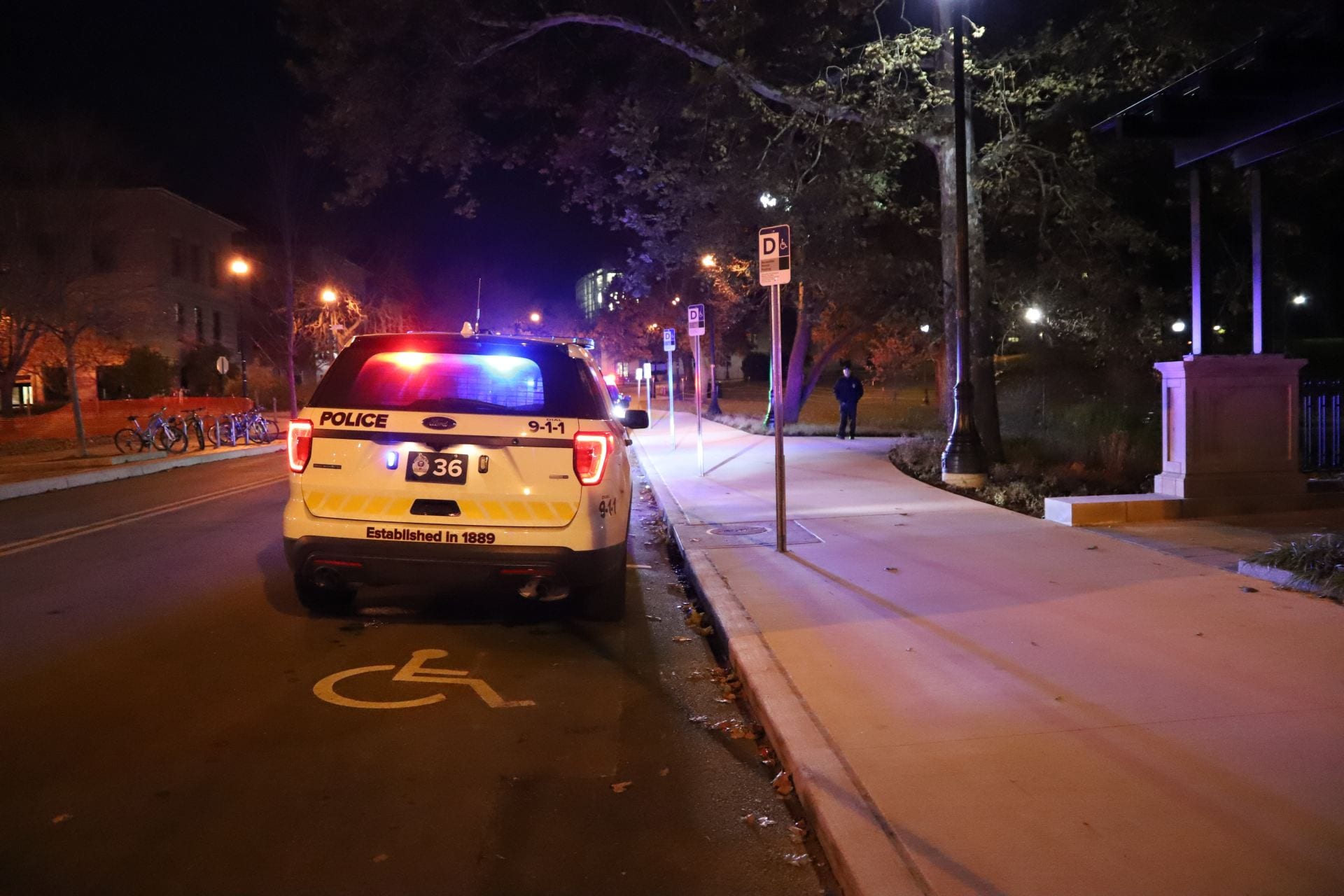When Stephanie Rond came to Ohio State in 1992 –– unlike many Buckeye freshmen throughout the years –– she wasn’t intimidated by the massive campus.
Rond was born and raised in Columbus, with the Ohio State campus as her stomping ground for much of her life. She saw her brothers attend a university that she eventually chose by virtue of its size –– a plethora of course options allowed her to explore areas of study she would not have found at a smaller school.
“It was more of a well-rounded degree, because I took entomology classes and what was called Women’s Studies classes at the time and I could really be informed about things that helped inform my artwork,” Rond said.
After graduating in 1997 with a degree in fine arts, Rond created art while cooking for Cameron Mitchell restaurants. She decided to stay in her hometown, while letting her travels to places like New York and California inspire her art.

Stephanie Rond in her home studio in Clintonville. Credit: Sara Stacy | Assistant Arts & Life Editor
Now, two decades after leaving the university, Rond has left her mark close to campus with a mural on the outside of the Student Book Exchange Bookstore that was installed earlier this year.
The piece features a painting of a woman speaking while books “fly” around her like birds. The woman in the painting is Dionne Custer Edwards, a local artist, writer and educator at the Wexner Center for the Arts.
Custer Edwards and Rond have worked together on nonartistic projects in the past and have been friends for several years, but this is the first time the two have collaborated as artists.
“She had a project she was thinking about and she thought it would be a great opportunity for us to do a project together and I signed on immediately,” said Custer Edwards, a 1992 alumna. “What an honor, what an opportunity to have the chance to work with a friend, to work with another creative in this way, or with another woman creative in this way.”
The idea for the project was formed after Rond was inspired by Custer Edwards’ poetry. Together they chose three of Custer Edwards’ pieces they thought would be good for the project, and the University District Organization decided on the one that was used.
“That piece really comes out of the climate,” Custer Edwards said. “You know the climate over the past years has been really difficult and I think we’re becoming more and more isolated and we’re becoming more and more distant.”
While Custer Edwards was revising her writing to be used in the mural, Rond was working on the painting that would be paired with the poem.
Rond took photographs of Custer Edwards performing her poetry to create the image of Custer Edwards featured on the mural. The flying books pay homage to the bookstore where the mural resides.
“It did take me quite a while to get to that idea, and a lot of times for walls it’s about visiting the space, so I went to that space I’d say three or four times,” Rond said. “But that’s how I kind of work, I will keep pushing myself, like ‘no this isn’t right, no this isn’t right,’ until I get to what I think is the perfect fit.”
Collaboration has played a key role in Rond’s art for some time, and she has also been incorporating models into her work for the past five years.
Rond said she’s been drawn to street art because of its accessibility, allowing her to reach people in a way she otherwise would not have.
“I’m a huge advocate for public art; I think it should be in every single neighborhood,” Rond said. “People that may not have time or feel comfortable going into galleries still deserve the opportunity to see themselves and see artwork and experience those things, so the more outdoor work we can have the better.”
Additionally, Rond has long had an interest in advertising, and said that street art is a way for her to place strong images of women in male-dominant outdoor spaces and to counter outdoor advertisements that objectify women.
Rond said her goal with the SBX mural, and much of her other work, is to create a space where women and girls can feel secure.
“I want women and girls to see themselves as active people in an environment, so empowered rather than ‘you have to look like this or you have to be this,’” Rond said. “I want specifically women and girls to maybe feel a little less alone on the streets, not that I can protect them with my art, but that they see positive images of themselves, and that’s empowering.”


